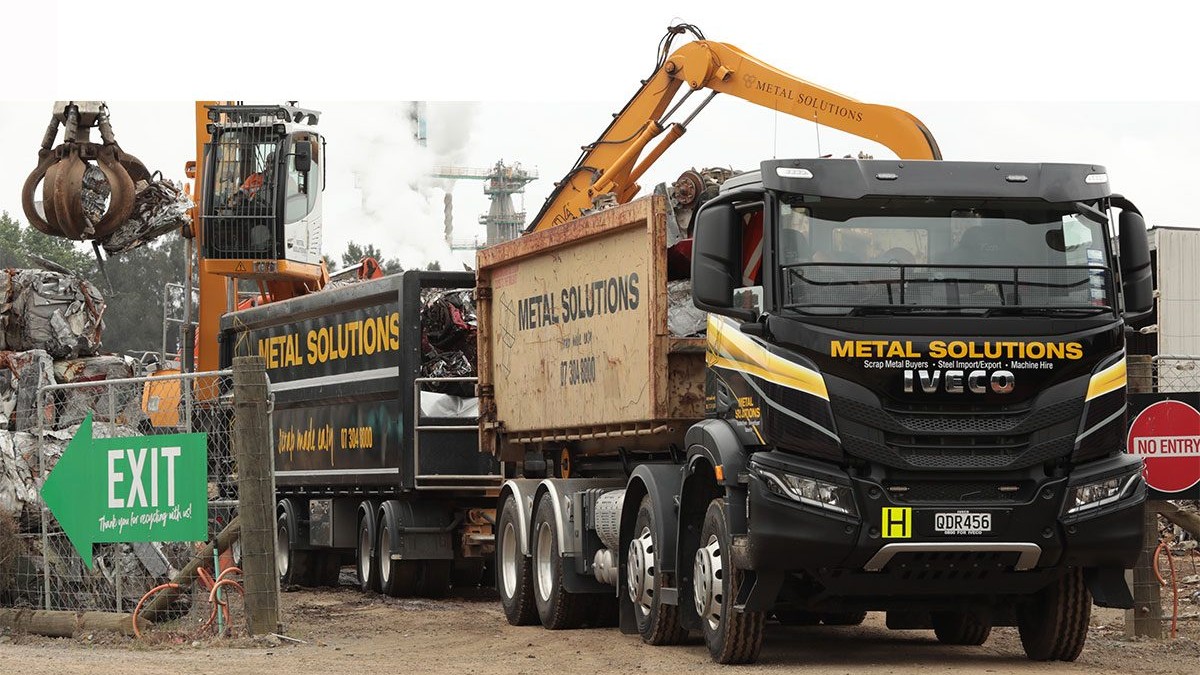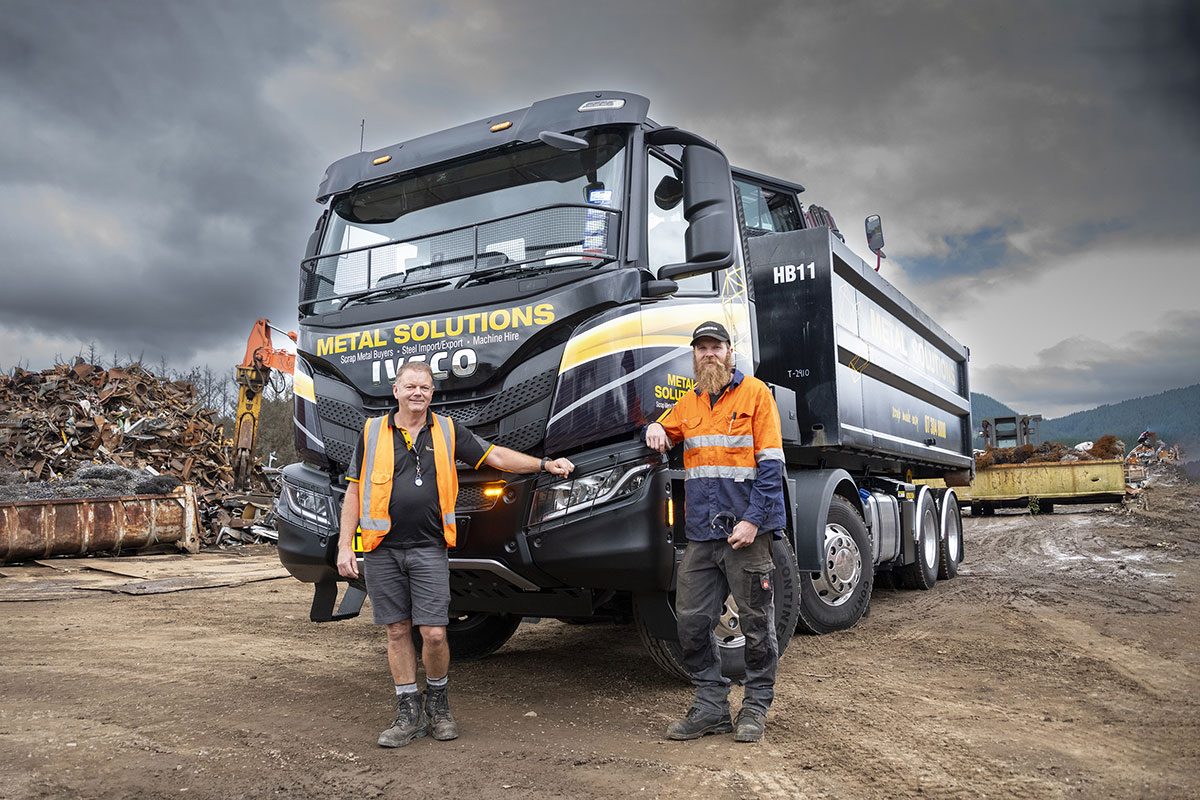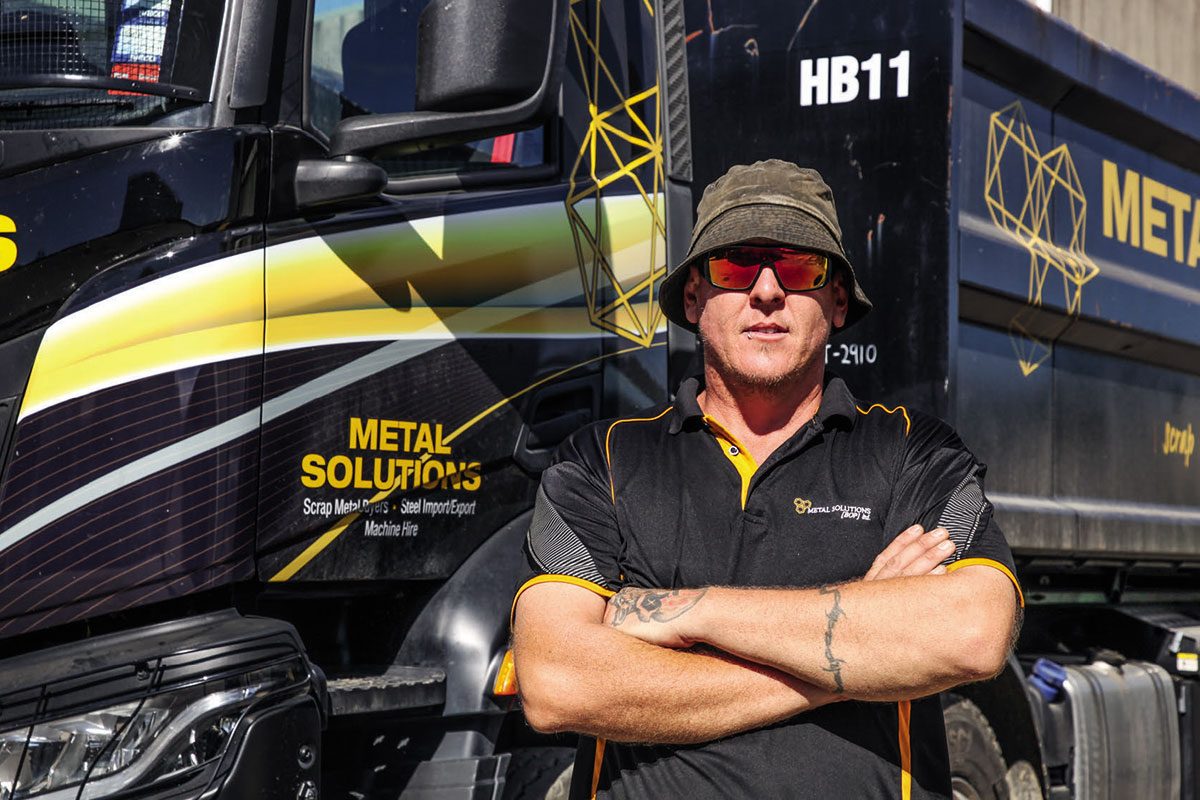
Being a bit of a petrolhead with a love for all things automotive, knowledge of one aspect of the lifecycle of a vehicle has always alluded me: What happens to cars once they’re crushed and baled?
MSL does crush cars, though not a lot, explains Dave. “If we have time, we’ll pull them apart and bale them in our baler. We separate the heavy steel out for export and the rest will go to the shredder in Te Puke. Sometimes, if we have a bit of a backlog, we’ll just crush them down and load them on top of the load,” Dave says.
The shredder is the intriguing bit … “Once baled, it has to go through a shredder, a big, high-speed drum with huge ‘hammers’ made of high-manganese steel attached to it. It’s a very blunt instrument; it just hammers and hammers until the particles are small enough to pass through the grate,” Dave explains.
“Then, downstream, magnets lift the steel out, leaving the copper, aluminium, stainless and some other things. Then they’ll have pick lines to physically pick out these bits. They’ll also have eddy-current magnets that turn non-ferrous metals (such as aluminium) magnetic at differing rates, allowing it to pick out the various non-ferrous metals individually. The plastics and dumping stuff left behind is called flock.
“I visited a massive shredder in San Francisco. They’ve installed an optical sorter because they found there is still a high percentage of metallic content in their flock waste stream. So they put it through a rotary kiln to dry it out and run it through an optical sorter. This spreads it out over a wide belt, cameras detect the little pieces, and just down from that, air streams blow the various little pieces in the right directions off the belt and into bins.
“It’s just amazing to watch. But we’re [MSL] not even remotely interested in any of that,” Dave remarks.





